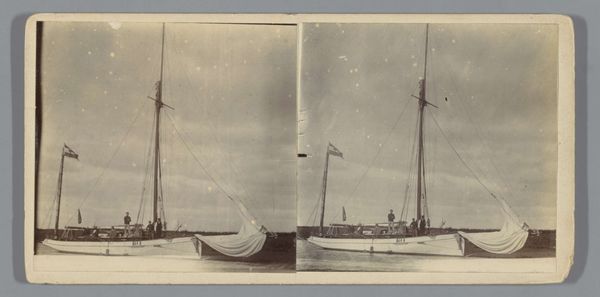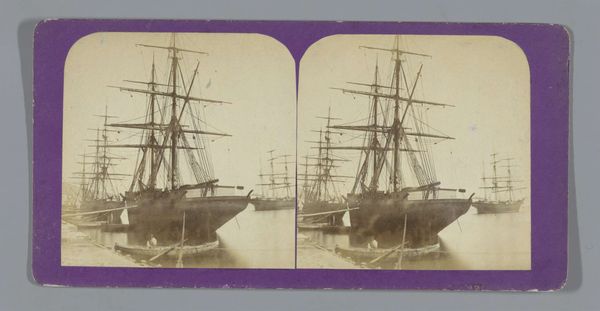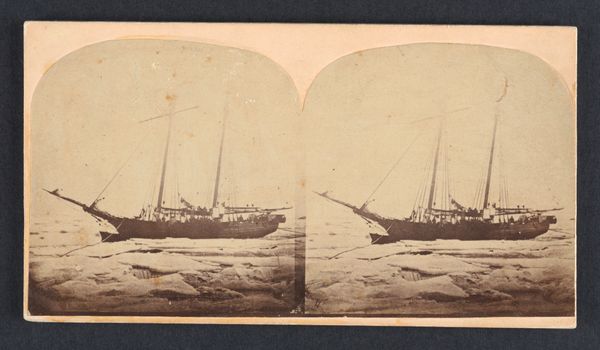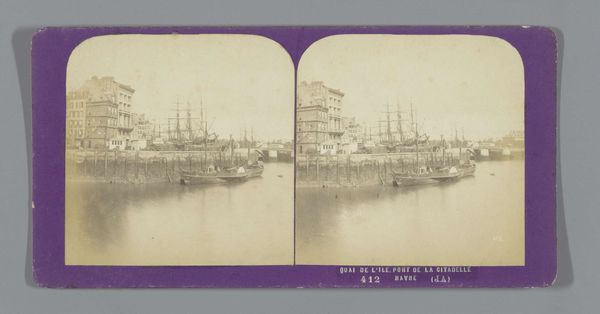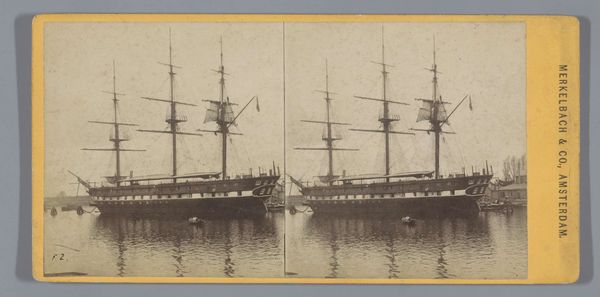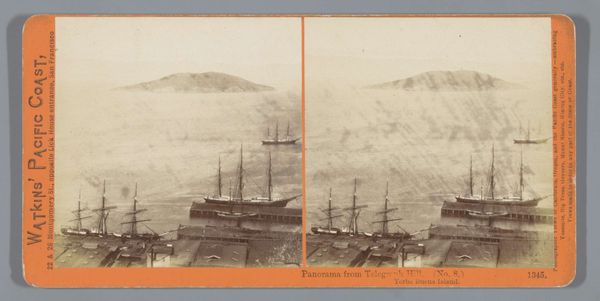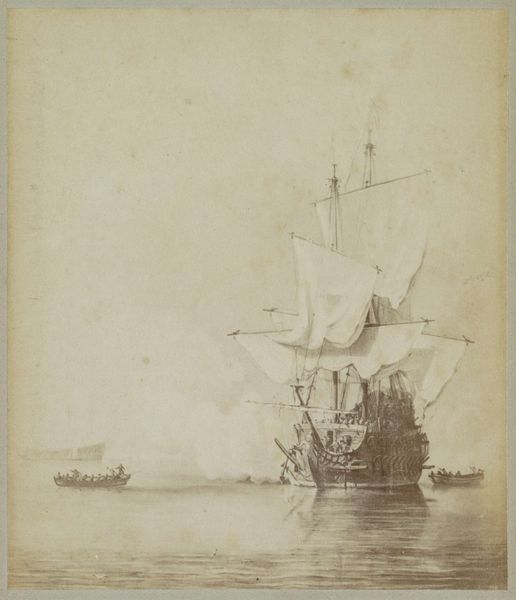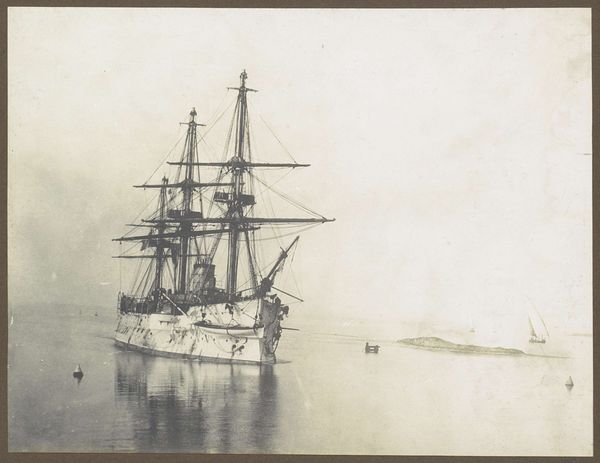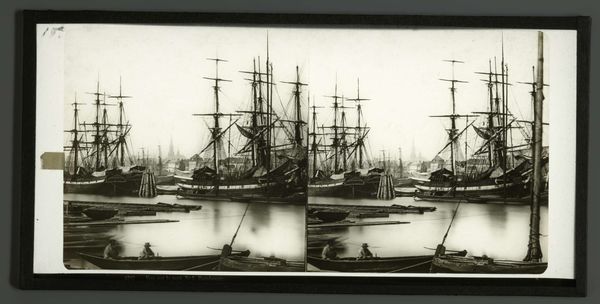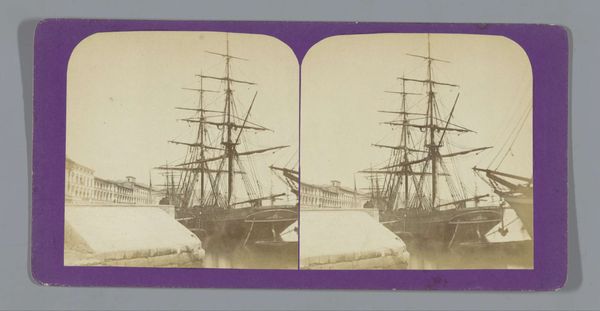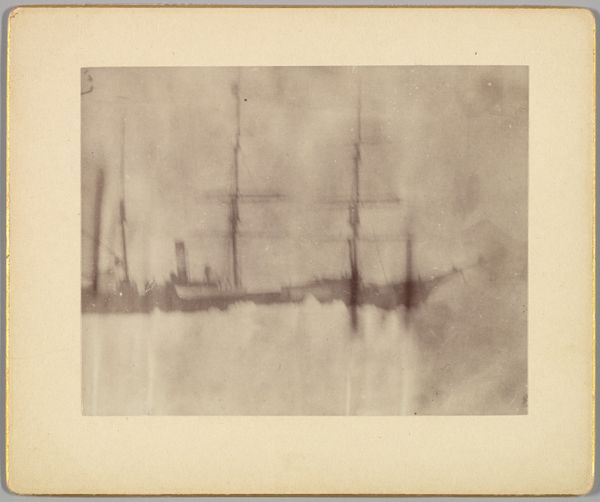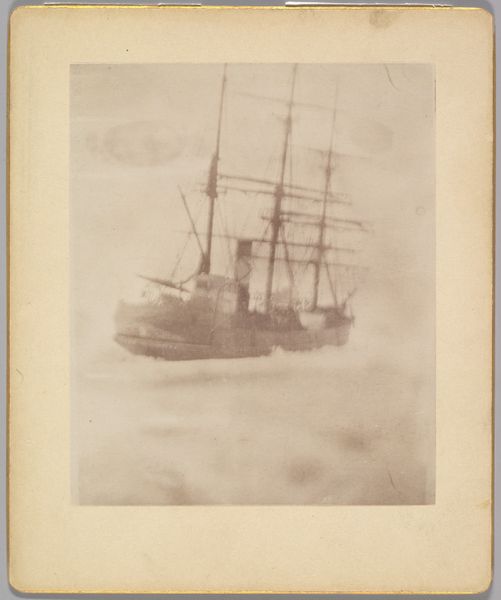
Walvisvaarders 'Diana' en 'Nova Zembla' varen nabij Dexterity Harbour, Baffineiland 1902
0:00
0:00
print, photography
#
still-life-photography
#
pictorialism
# print
#
landscape
#
photography
Dimensions: height 88 mm, width 178 mm
Copyright: Rijks Museum: Open Domain
Editor: Here we have an anonymous photograph from 1902, "Walvisvaarders 'Diana' en 'Nova Zembla' varen nabij Dexterity Harbour, Baffineiland," which seems to mean, "Whalers 'Diana' and 'Nova Zembla' Sailing Near Dexterity Harbour, Baffin Island." The icy blues and greys create such a desolate mood. How do you interpret this work? Curator: This image, captured during the age of colonial expansion, depicts not just a landscape, but a site of contested resources and exploitation. The ships, dwarfing the icy environment, speak volumes about humanity's ambition, particularly the relentless pursuit of resources, heedless of the impact on both indigenous communities and the environment. Do you think the romantic "landscape" depiction softens the brutal reality of whaling? Editor: I see what you mean. At first glance, it's a stunning, almost romantic scene. But when you consider the whalers' presence and impact, it certainly complicates the picture. Are there any particular historical events related to whaling during that time that help contextualize this photograph? Curator: Absolutely. This era saw a dramatic rise in commercial whaling, decimating whale populations and disrupting Arctic ecosystems, alongside forced interactions with Inuit communities who were impacted severely. Furthermore, consider the labor involved – often brutal and exploitative, mirroring other colonial ventures. Does that impact your interpretation of the photograph? Editor: It definitely shifts it. I was initially drawn to the aesthetics, but understanding the social and ecological costs casts a shadow over the entire scene. Now the image speaks to human dominance and the disruption of natural ecosystems and indigenous ways of life. Curator: Exactly! The tension between aesthetic appreciation and ethical awareness is key. It challenges us to consider whose stories are being told, and whose are being erased in these historical representations. Editor: Thanks for sharing your insights; I'll never look at a seascape the same way again. Curator: And hopefully, this image now invites a critical discussion on power, exploitation, and our ongoing relationship with the environment.
Comments
No comments
Be the first to comment and join the conversation on the ultimate creative platform.
